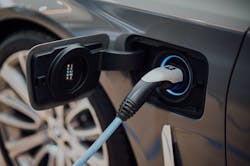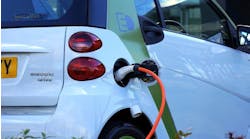April 14, 2021—Over the last several months, major developments have further shifted manufacturers’ focus away from internal combustion engines and toward electric vehicles.
Although the market share of EVs is just two percent of all vehicles on the road, growth is expected rapidly. Major automakers like General Motors, Volkswagen and Toyota have all pledged to electrify their entire fleet within the next 15 years. Others, like Ford, have announced significant investment in EVs.
But without proper infrastructure, these automakers feared the country wouldn’t be able to maintain the growth. Just several days after urging President Joe Biden to include EV investment in his infrastructure plan, he did.
So what is in President Biden’s $2.3 trillion infrastructure plan? What effect would that have on repair shops? And what is the likelihood it makes it through congress? Ratchet+Wrench spoke with Morgan Folger to find out, the director of Clean Car Communities, an initiative from environmental advocacy group Environment America to reach net-zero emissions in transportation.
The Specifics
In total, Biden’s infrastructure plan includes $174 billion for electric vehicles. But how will that be divided up?
A majority of it, $100 billion, will be allocated to rebates for consumers buying EVs. The rebates, expected to be $7,500, would greatly help lessen the gap between the price of EVs and ICEs, currently one of the largest deterers for consumers to make the switch, Folger says.
Another headline of the Biden plan is the planned creation of 500,000 EV charging stations, with $15 billion allocated for that rollout, Reuters reported.
Jeff Hudnut, EV expert and product manager at Bosch Automotive Service Solutions, sees chargining stations as one opportunity for repair shops to get in on the action.
Hudnut says adding EV chargers on property is a great customer acquisition tool, and is relatively inexpensive, costing just cents every time a customer plugs.
“You’re capturing a customer for an hour of two, if you can sell one item to them, you’re out front,” he says.
The final $59 billion will be divided into three areas: $20 billion for electric school buses, $25 billion for zero-emission transfit vehicles and $14 billion for other tax incentives.
“Certainly now that we have political leaders that recognize the urgency of the climate crisis, electrical vehicles are a large part of the solution,” Folger says.
Will it pass?
As of mid-April, Biden’s infrastructure plan had not passed in the Senate or the House of Representatives. An April 12 CNBC report stated the legislation is still several months from passage. That’s because many parts of the bill are expected to be scrutinized, but EV infrastructure may not be one of them. Folger says there is large bipartisan support for EV funding and that the bill is “more modest” than other democrats have proposed.
Momentum was already building for EV funding prior to Biden’s announcement. A separate bipartisan bill, the Securing America’s Clean Fuels Infrastructure Act, was introduced in the Senate in March that worked towards several tax credits.
“One of exciting things about EVs is there is broad support on both sides of the aisle,” she says. “I would certainly say the move towards electrical vehicles is picking up speed.”
However, even if the full funding is approved, Folger says this is just a first step towards net-zero emissions in transportation, which is the number one source of global warming pollution in America. Folger points towards the need for more interoperability between charging stations being at the forefront of that.
“It’s going to take a lot of proposals, not just this one, to get there,” she says. “It’s certainly a step in the right direction and will be a great investment in helping to move the electric vehicle market forward, but there’s always more we can do to make a bigger difference.”
Additional Aid
Biden’s infrastructure plan also hopes to help another ailing part of the auto industry, the semiconductor shortage. An estimated $50 billion will be used to build up domestic semiconductor production and lessen the dependence on other countries.
Another $46 billion will be invested into clean energy manufacturing, which will help provide additional jobs to build things like EV chargers. This will help address a major point of worry from union groups that believe the plan will disproportionately affect auto workers.



